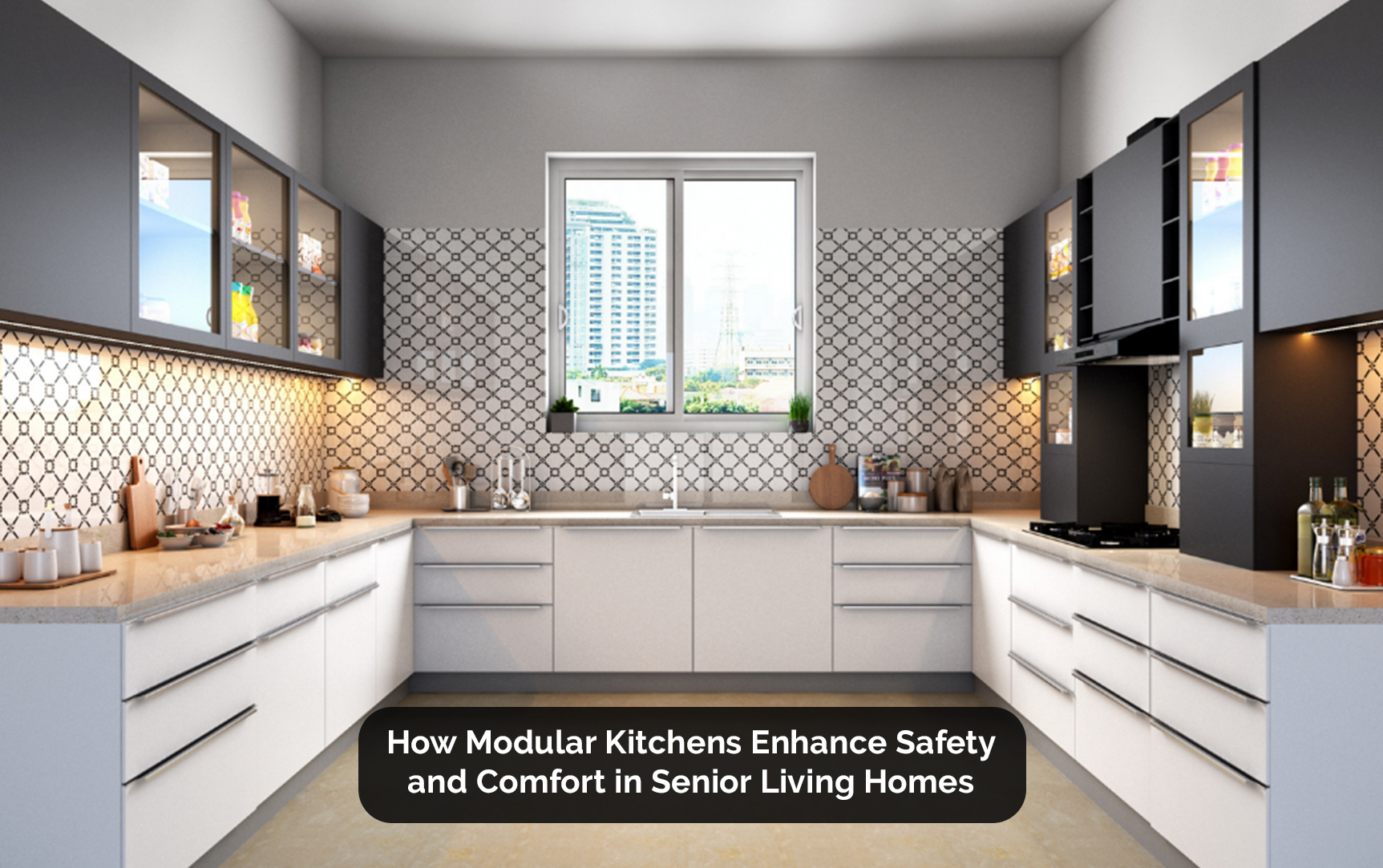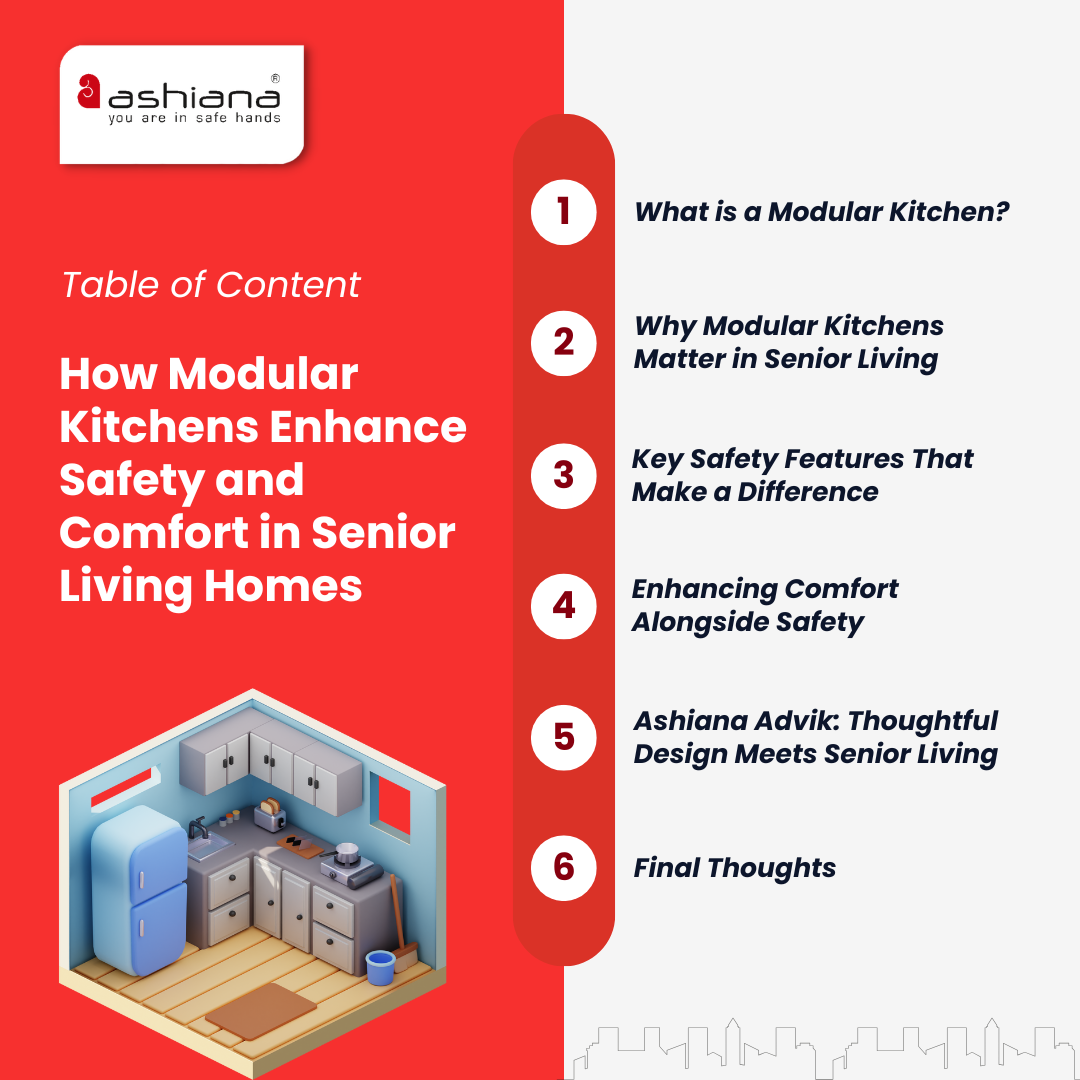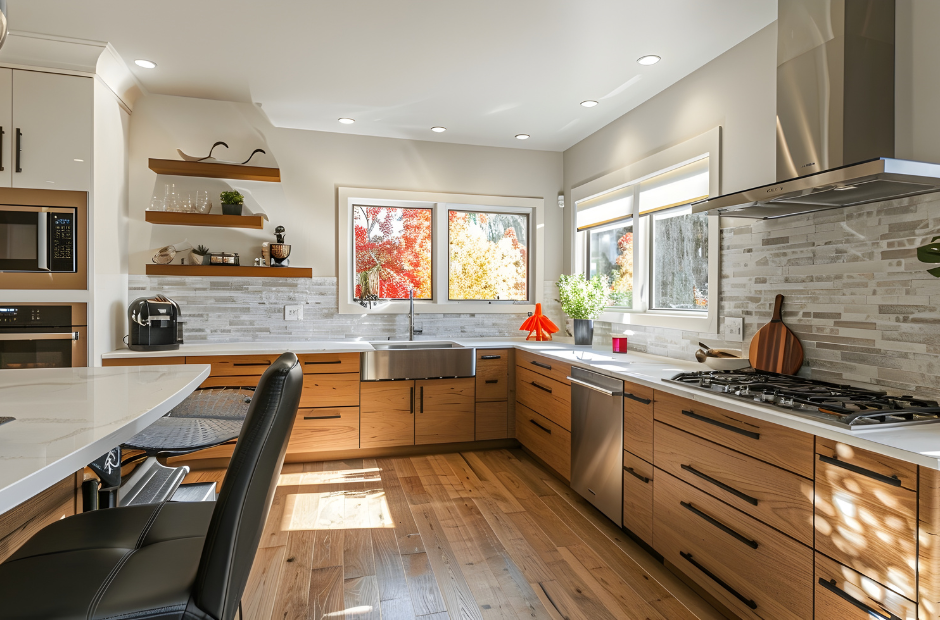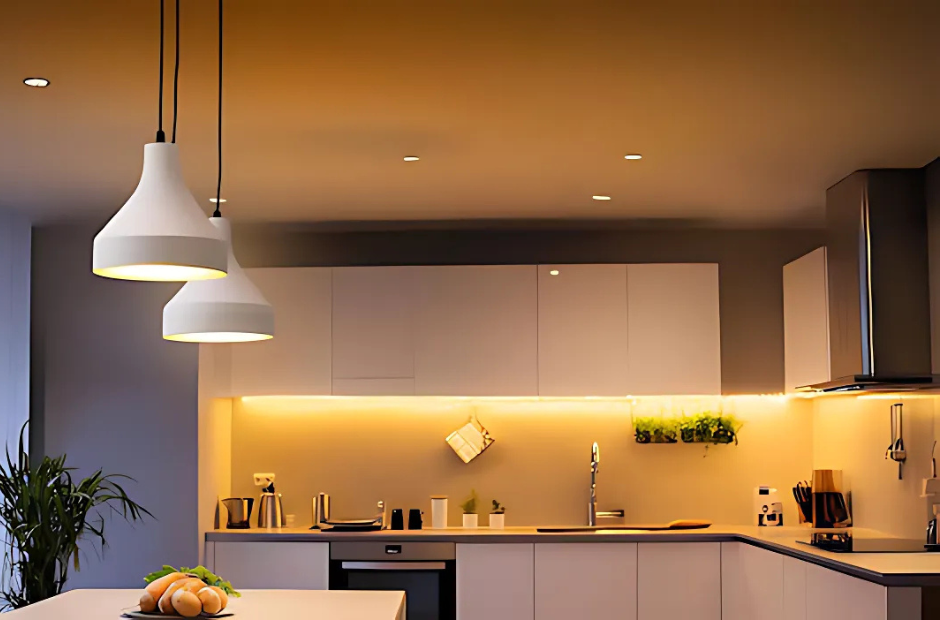



Modular kitchens include features like slip-resistant flooring, ergonomic cabinets, rounded edges, and better lighting to ensure safety and reduce accident risks for seniors.
Modular kitchens are designed with adjustable counter heights, intuitive layouts, and quiet, soft-touch features that cater to seniors’ physical and emotional comfort.
Modular kitchens promote independence and ease in daily tasks with features like accessible appliances, smart designs, and ergonomic workflows tailored to seniors’ needs.
Ashiana, Ashiana Housing build homes. Homes surrounded by vast green spaces and fresh breeze. Homes cocooned in secured gated complexes. Homes where futures are forged and there are opportunities to grow. And Homes in environments brimming with healthy activity, trust and respect. At heart, we build communities with care.
Other posts by Ashiana
Join 1000+ of fellow readers. Get expert real estate knowledge straight to your inbox absolutely free. Just enter your email address below.